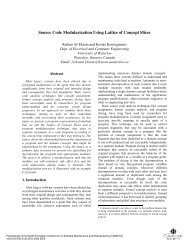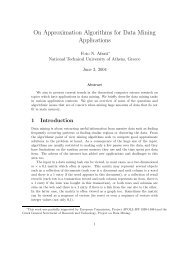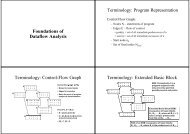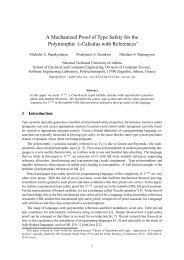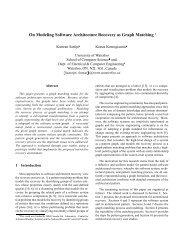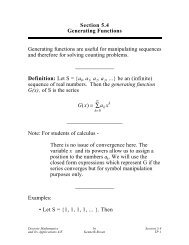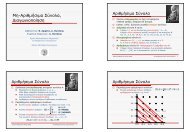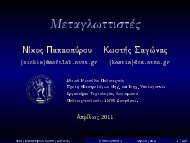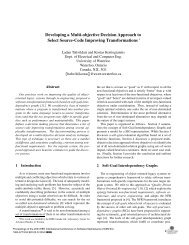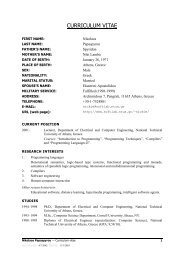Manual
Manual
Manual
You also want an ePaper? Increase the reach of your titles
YUMPU automatically turns print PDFs into web optimized ePapers that Google loves.
Chapter 2: Examples 39<br />
}<br />
}<br />
/* Initially make the buffer long enough<br />
for a 40-character symbol name. */<br />
if (length == 0)<br />
length = 40, symbuf = (char *)malloc (length + 1);<br />
i = 0;<br />
do<br />
{<br />
/* If buffer is full, make it bigger. */<br />
if (i == length)<br />
{<br />
length *= 2;<br />
symbuf = (char *) realloc (symbuf, length + 1);<br />
}<br />
/* Add this character to the buffer. */<br />
symbuf[i++] = c;<br />
/* Get another character. */<br />
c = getchar ();<br />
}<br />
while (isalnum (c));<br />
ungetc (c, stdin);<br />
symbuf[i] = ’\0’;<br />
s = getsym (symbuf);<br />
if (s == 0)<br />
s = putsym (symbuf, VAR);<br />
yylval.tptr = s;<br />
return s->type;<br />
/* Any other character is a token by itself. */<br />
return c;<br />
This program is both powerful and flexible. You may easily add new functions, and it<br />
is a simple job to modify this code to install predefined variables such as pi or e as well.<br />
2.6 Exercises<br />
1. Add some new functions from ‘math.h’ to the initialization list.<br />
2. Add another array that contains constants and their values. Then modify init_table<br />
to add these constants to the symbol table. It will be easiest to give the constants type<br />
VAR.<br />
3. Make the program report an error if the user refers to an uninitialized variable in any<br />
way except to store a value in it.



